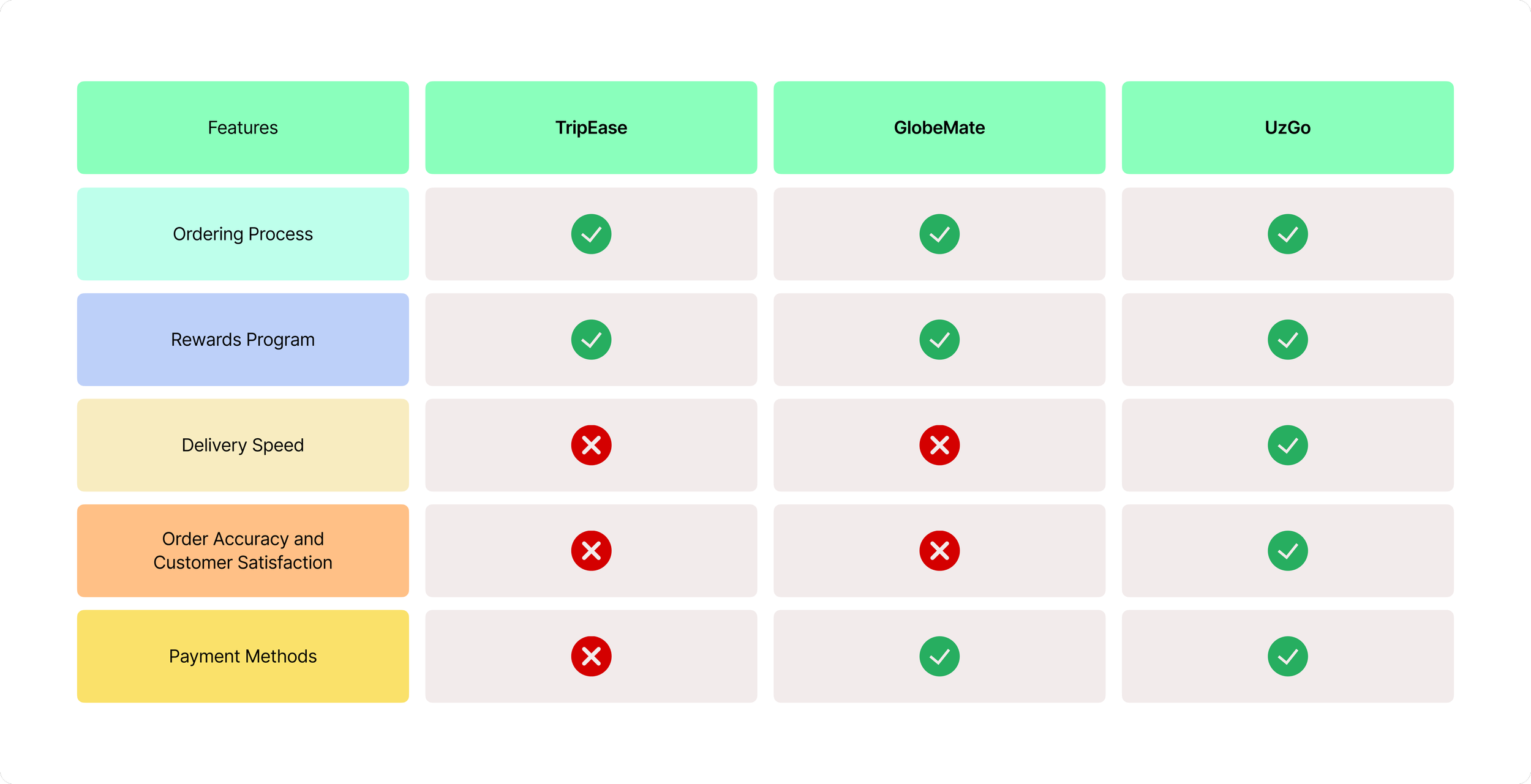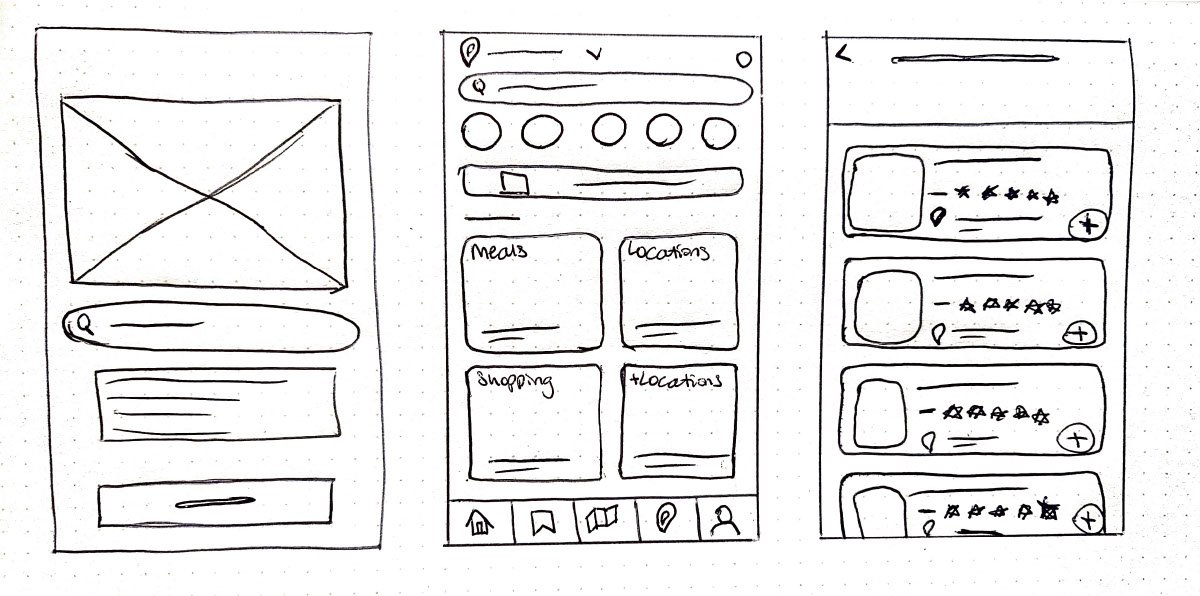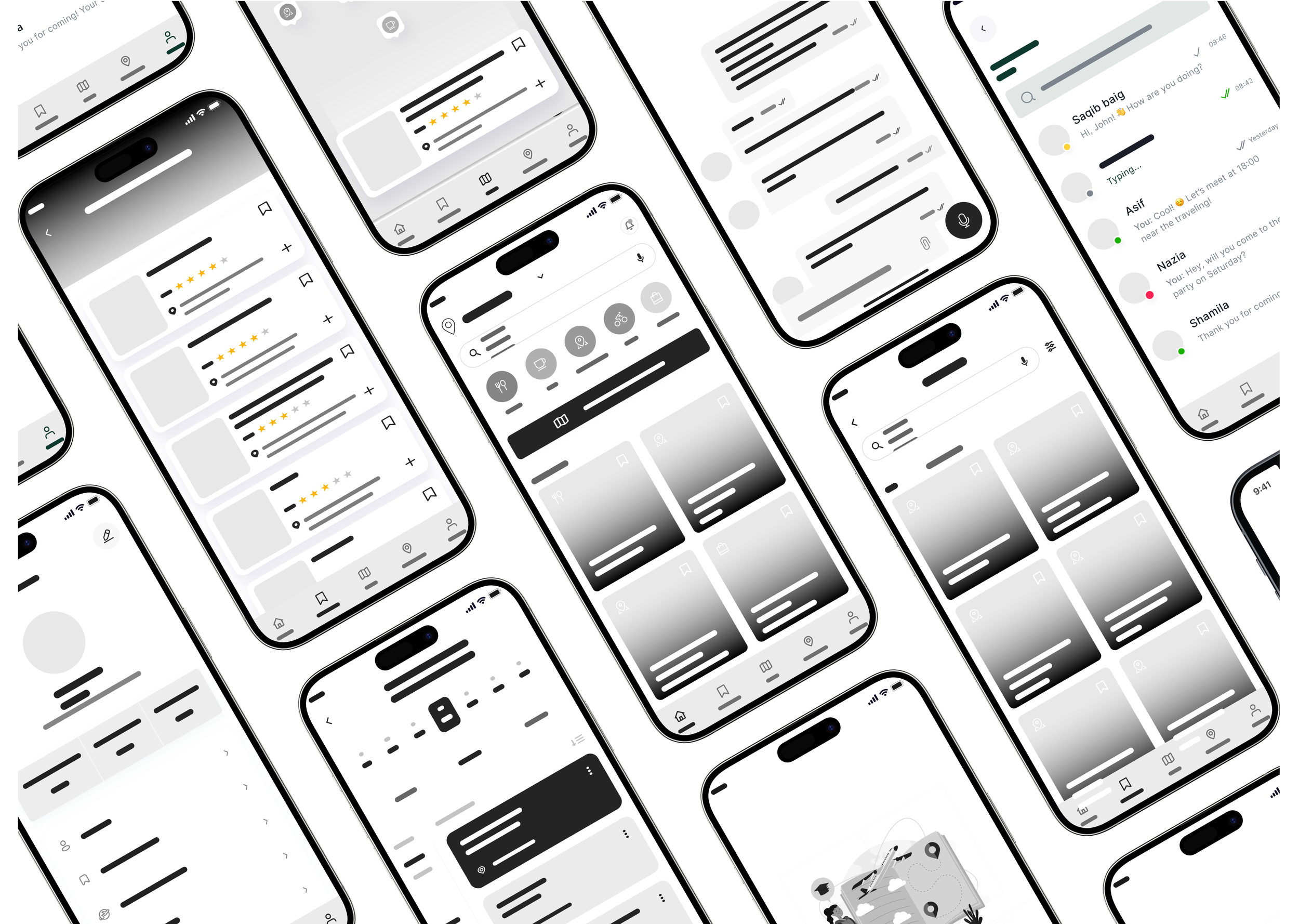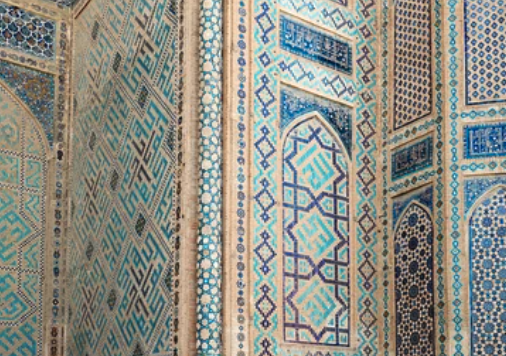Project Overview
Tools : Figma
My Role : Research, Design, Writing.
Timeline : 10 weeks
About App
UzGo is an offline-first travel app for exploring Tashkent. Visitors can access reliable metro maps, discover hidden teahouses, and receive curated local tips even without internet. Another key feature is authentic tour bookings, helping travelers experience the city like a local while staying connected to culture, food, and history.
The Problem:
The Tashkent Trails app suffers from unreliable connectivity, making it difficult for travelers to navigate the city. Offline maps are incomplete or unavailable, and users often struggle to find key landmarks and metro routes, leading to confusion and frustration.
Solution:
The Tashkent Trails app struggled with unreliable connectivity and incomplete offline navigation. Solutions include one-tap offline map downloads, comprehensive coverage of metro lines and landmarks, smart prompts for missing areas, and automatic updates, ensuring reliable, intuitive navigation for travelers.
Design Process
The UzGo design process focused on quickly creating and testing simple, user-friendly prototypes to help travelers easily book tours and discover Uzbekistan’s unique experiences.
User Pain Points
When exploring Tashkent, travelers often face challenges that make navigation and planning stressful. Understanding these pain points helps design an offline-first, intuitive travel experience.
Quantitative Research
With the help of google forms, I created online survey questionnaires for users. Approximately 39 people responded to that survey, making it possible for me to frame the problem correctly.
How likely are you to use UzGo to join group activities, tours, or collaborative travel experiences while exploring Tashkent?
Insights From Interviews
I surveyed travelers and heard all the horror stories of getting lost, missing tours, and chasing outdated info across Tashkent. It was eye-opening, exhausting, and hilarious at the same time, proof that a reliable offline app like UzGo is desperately needed.
Competitor Analysis
Evaluating TripEase, GlobeMate, and UzGo felt like a whirlwind tour through Tashkent—some apps were helpful, some left me scratching my head, and a few seemed designed for aliens rather than travelers. Comparing features like booking process, rewards, speed, accuracy, and payment options highlighted gaps in the market and showed why UzGo is ready to make
exploring Tashkent seamlessly, personalized,
and actually fun.
MVP Time!
We created Lola based on insights from our surveys and interviews. The reason we created this persona is to define who our product is for and how it should serve them. From the data, we compiled her Pain Points, Goals, Motivations, and Personality traits. For example, Lola struggles to find reliable info about Tashkent, wants smooth trip planning with personalized recommendations, and loves discovering hidden gems—just like our target audience.
Idea Generation & Inspiration
After wandering through countless blogs, offline maps, and half-working travel apps, I realized Tashkent travelers desperately need a sidekick—enter UzGo. Inspired by best practices in mobile apps and travel platforms, I started dreaming up features that would turn the usual “lost-in-the-city” experience into a smooth, delightful adventure. Offline maps and complete metro navigation mean users can get around confidently, even when Wi-Fi decides to take a vacation.
Personalized recommendations and local gems were next on the list. Why settle for Amir Timur Square three times in a row? UzGo could suggest hidden teahouses, quirky experiences, and tailored itineraries based on user interests—think of it as a personal travel genie, minus the magic lamp. Smart alerts for museum closures, metro delays, or surprise holidays make sure travelers don’t get ambushed by unexpected surprises.
Finally, I focused on making booking and sharing effortless. Users can reserve tours, classes, or guided walks directly in the app, avoiding endless WhatsApp chains or frantic street bargaining. Social sharing and rewards add a sense of community, letting travelers post reviews, share discoveries, and earn points for uncovering hidden gems. The goal is simple: turn every traveler from “lost and confused” into “confident, curious, and ready to take on the city.”
Existing UX Issues
Before UzGo, exploring Tashkent felt like a scavenger hunt with invisible clues. Info about attractions, opening hours, and local etiquette was scattered across blogs, outdated sites, and forums—good luck figuring it all out.
Booking local tours was even trickier. Many experiences had no online presence, leaving travelers to rely on word-of-mouth or sheer luck. Existing apps stuck to the same tourist spots over and over, offering little personalization.
Safety and convenience were missing, too. Without real-time alerts for metro closures, holidays, or prayer schedules, travelers often found themselves at closed museums or stranded mid-route. UzGo fixes this chaos, making Tashkent easy, fun, and stress-free to explore.
User Flow:
The UzGo user flow guides travelers from sign-up or login through home, booking, map, and profile screens, allowing them to search, filter, select activities, schedule trips, and share experiences—all while managing settings and personal preferences.
User Journey Map
“From first download to sharing hidden gems, the UzGo journey maps how travelers explore, book, and navigate Tashkent with ease (and a little fun along the way).”
Ideation Sketches
After creating the user flow and journey map for Uzgo, I started sketching different ideas to visualize how users would navigate through the app. I made several versions, and the chosen design became the foundation for my wireframes and interface layout.
Digital Wireframes
I then translated my chosen user flow and journey map for Uzgo into low fidelity wireframes and conducted an initial round of usability testing to evaluate the app’s navigation and identify any early issues. After gathering and implementing feedback on the flow and functionality, I developed a mid-fidelity version and carried out another round of user testing to further refine the experience.
The problem was that travelers needed an app that helps them explore Uzbekistan smoothly and book tours easily.
For the Solution I mapped out the app’s main structure with a sitemap focused on user goals. Since time didn’t allow for more complex features, I created dozens of lo-fi wireframes and narrowed them down to the best designs. I made sure users could comfortably log in through various options and added profile pages with photos, names, and easy logout. The app also includes features for discovering sightseeing spots, restaurants, local events, and travel tips to make the whole trip seamless and enjoyable.
Visual Identity
I created a mood board to capture the visual identity I wanted for UzGo, using keywords that reflect the app’s spirit and design style.
Authentic
Adventurous
Warm
Inviting
High Fidelity
I then started inputting the determined visual identity into my high fidelity wireframes.
Learning Insights
Designing UzGo taught me that maintaining a clear visual hierarchy is an ongoing challenge—staying consistent takes effort, and there’s always more to refine. Putting myself in the user’s shoes helped me stay focused on addressing real needs and pain points throughout the design process. Even when things felt tough, I found inspiration and guidance by studying successful travel apps and UX best practices.
What’s Next
My next steps are to conduct usability testing so we can validate whether UzGo truly meets user needs and improve our solutions based on real feedback. I’ll focus on keeping the upcoming prototypes as close as possible to the ideal experience and user flow. This design work is a continuous journey—there’s always room to grow. I genuinely welcome any feedback, both on the product’s visual design and on how I’ve presented the case study. Thank you for taking the time to review it!.























